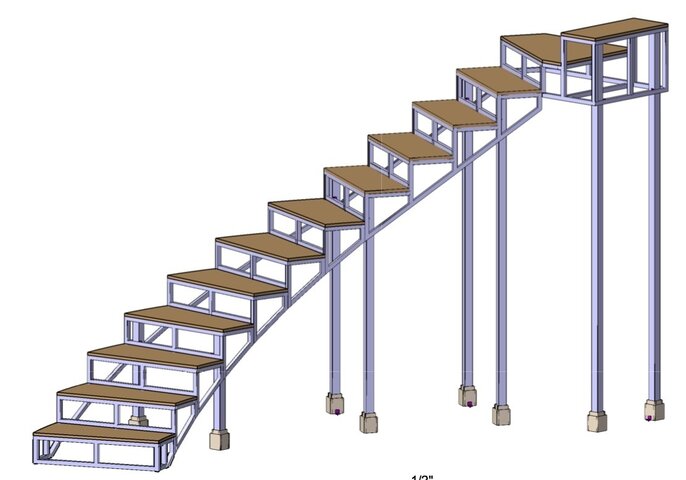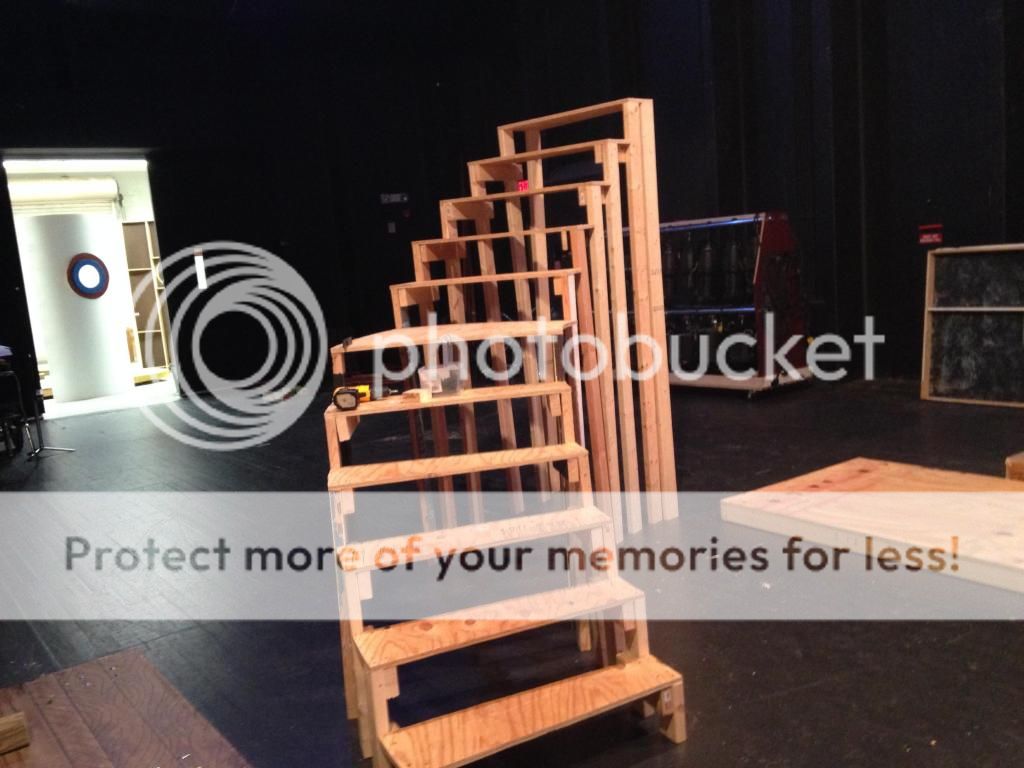Rein Oterholm
Member
Hey,
im setting up a school theater. This year they want stairs on each side of the stage, leading up to a second floor almost like a balcony. I have never done this before, and there is some complications... For starters, people need to be able to walk underneeth the stairs, because the emergency exit is located right behind, so the support needs to be pillars or something in that direction. Second, i would like the staircase to be made of somethingelse than wood, the directors dosnt want it to look like a house (villa.) They want it to be more like back street, i dont really know, only that it shouldnt be of wood. I saw the staircase on Killer Karaoke, which i quite liked, something like this would be perfect. I have also checked out hoac, but i dont really know. If anyone has any sugestions feel free to shout em out! The budgent isnt super high, but its not the smallest. Il add a picture so you can see my idea.
Thanks anyways
-Rein

ps: the height is about 3,8m not 3,02
im setting up a school theater. This year they want stairs on each side of the stage, leading up to a second floor almost like a balcony. I have never done this before, and there is some complications... For starters, people need to be able to walk underneeth the stairs, because the emergency exit is located right behind, so the support needs to be pillars or something in that direction. Second, i would like the staircase to be made of somethingelse than wood, the directors dosnt want it to look like a house (villa.) They want it to be more like back street, i dont really know, only that it shouldnt be of wood. I saw the staircase on Killer Karaoke, which i quite liked, something like this would be perfect. I have also checked out hoac, but i dont really know. If anyone has any sugestions feel free to shout em out! The budgent isnt super high, but its not the smallest. Il add a picture so you can see my idea.
Thanks anyways
-Rein

ps: the height is about 3,8m not 3,02




